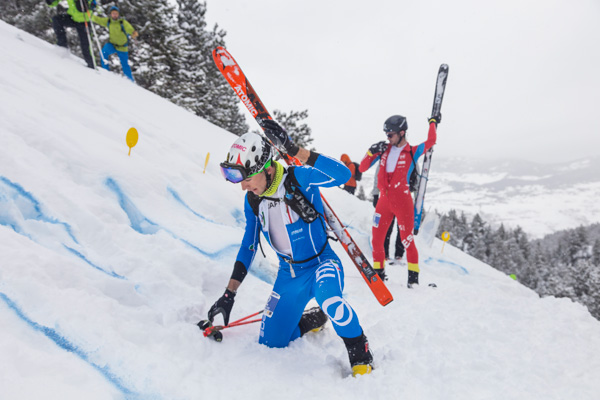Mental training is a commonly overlooked aspect of preparation for athletic competition. At best, most of us use only a few mental skills to cope with the difficulty of training and racing. In this article, we will take you through a few skills that will come in handy during a skimo season.
What is Visualization
Visualization is a method for practicing skills without actually physically performing them. It’s possible to use to practice technique (including transitions), overcome distractions, and prepare for more general race situations. Visualization training requires nothing more than a quiet space and some free time. Many strategies exist for visualization and the following are some that work best for us.

Preparation
Start by identifying visualization scenarios in three categories: Techniques, Distractions, and Racing Situations. I like to write things down so I start by dividing things I want to practice into three columns with the above categories as the title.
Technique visualization is used to develop a specific skill. In skimo, transitions are a good example of a technique that many of us need to improve and in which visualization can be employed.
Distractions are any type of adverse event in a race from which you must recover. A crash, a failed skin, or a frozen water bottle are all possible examples of distractions.
Racing Situations are more general, such as a start of a race, passing a competitor, skiing a difficult descent and so on.
In each column, on your piece of paper, write down as many scenarios of possible visualizations that you can think of. They can be specific to a single race or general to the racing environment. Once you’ve identified a handful of each, choose one at a time to visualize. I try to only do one or two scenarios per visualization session so they can remain clear in my mind rather than confused with many. You can do your visualization entirely in your head or write down some prompts (action steps). Notecards can be useful, writing the scenario on one side and then written prompts taking you through the visualization on the other – this way you are building yourself a library of scenarios and actions for future reference.
Visualization
There are several important things to include in the visualization process but most important is that it is as polysensory and positive as possible:
Polysensory refers to including as many senses as possible. While visualizing, you should not only see the scenario but also feel it. In a racing situation, this might include a cold, biting wind, fatigued legs, and the taste of blood from exertion! Include as many physical sensations and environmental conditions as possible.
Positive means that all visualizations should be resulting in a positive outcome. If you visualize yourself failing, you are setting yourself up for failure. Instead, always visualize yourself at your best! In the case of visualizing distractions, while you are initially experiencing something negative, through the course of the visualization, you should be realigning with it in the best possible manner and reversing it into something positive. A good way to think about it is to consider the problem or distraction and then think, if my coach was standing next to me right now, what would they say? You will picture the best version of yourself in that scenario.
Visualization can include a combination of 1st and 3rd person perspective. Some athletes like to see things through their own eyes while others like looking from above and seeing their body move through the action. I believe a bit of both is best – 1st person allows you to best feel the physical and emotional sensations while 3rd person allows you to see your body acting perfectly.
Finally, visualization should include all the emotions associated with that particular scenario. If you are visualizing a distraction, try to internally feel the frustration and panic initially but then regain composure and experience the confidence as you quickly act to correct the problem and finish stronger than before.
Putting it all together
Here is a particular situation (starting a race) and my visualization process:
I’ve got all my gear prepared perfectly – skis are waxed, skins are glued, and everything else is dialled and fits like a glove. I’m just finishing my warmup and even though the weather is a bit cold, I’m quite warm. I ski up to the start corral and feel my heart-rate settling as the race official checks my beacon. After I drop my jacket and pull up to the start line, I feel a bit of a chill but also the excitement of the race about to start. Standing still, my heart rate increases as I tense up. With a few deep breaths, my heart rate stabilizes. I relax my grip on my poles and get positioned for the start. The gun fires and I take off running, keep breathing, smooth stride, poling fast…
Do you use visualization to improve your skiing? What other mental skills do you use to prepare for training or events?


Leave a Reply